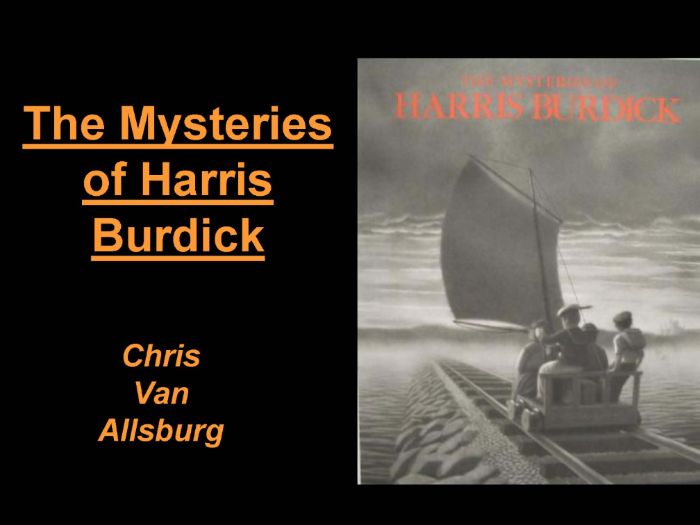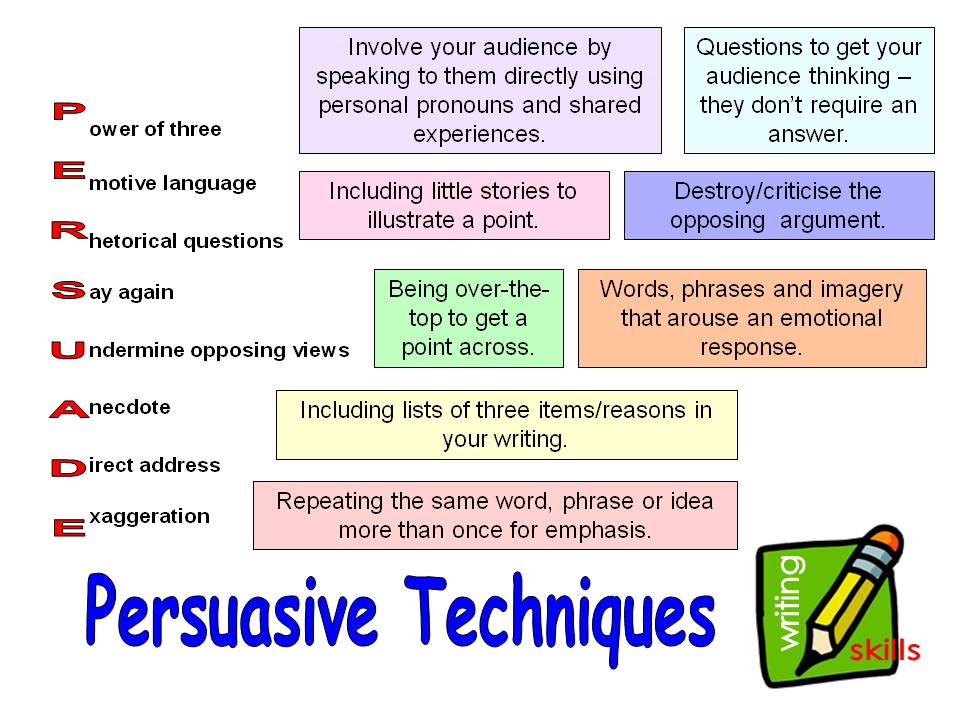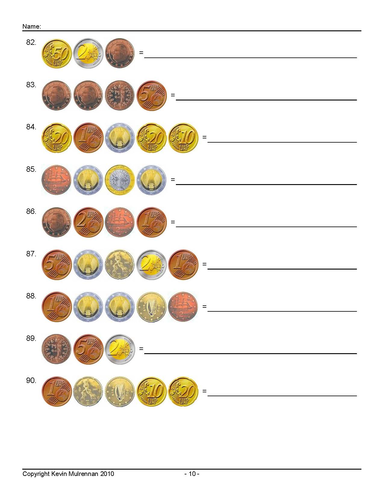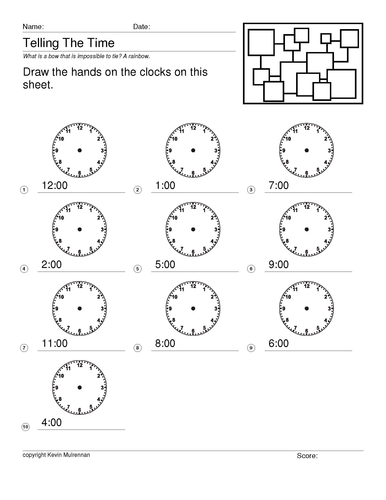372Uploads
107k+Views
35k+Downloads
Bundle

Year 4 Planning Complete Year's Planning Numeracy Literacy KS2 & Aesop Cloze Worksheets Bundle
Great mega bundle.
A complete year’s planning.
Plus great Aesop cloze worksheets.
Incredible value.
Please look at my shop for individual details.
Below is one as an example:
Planning for the Autumn term for year 4.
You get 160 mb of material so good value imo.
I taught mainly in Catholic schools so has a Catholic bent. But as we live in a multicultural society, this should be no problem.
You get planning for:
creative curriculum
Literacy
Numeracy
P.E. (some)
Science (some)
R.E. (Advent etc)
Loads of great lessons to ease your Sunday afternoons. Just cut and paste into your school template.

Geography Lesson KS2 Mountains Avalanches Planning and worksheets
A nice little set of handouts and planning.
Suitable for about years 4 to 6.
Couple of nice powerpoints and worksheets.
Good for map work.
Find the countries.

Persuasive Writing Lots of Planning Powerpoints Worksheets English
Happily retired, decided to put together my Persuasive writing planning from my various schools.
there’s a mass of stuff!
Save yourself a shedload of time and enjoy your Sundays!
Plenty of great powerpoints.
From different years but concentrating on years 3 to 6.
example planning :
Main teaching:
Explain that we are now looking at another text under the umbrella of persuasive texts.
Explain that we may sometimes need to write a letter to a person or organisation in order to put across our point of view and persuade them to take a course of action or come around to our point of view.
Revise what we need to include in a persuasive argument, explain that it is exactly the same in a letter but in a slightly different layout.
Read the example of a persuasive letter from page 17 of the L4 study guide.
Deconstruct and discuss. Elicit that the opening of the letter needs to be powerful and state the objective of the letter. Talk about the conclusion of the letter and how it also needs to be powerful.
Ensure that children understand the structure of a letter (addresses etc).
Activity 1
Bring children back together and draw up a list of good opening lines ‘I am writing to express my disgust’ etc.
Explain that, tomorrow, children will be writing their own persuasive letter.
Show them the title ‘TV adverts should be banned for junk foods’
Briefly discuss what is a ‘junk food’ and brainstorm reasons for not advertising them on TV.
Encourages obesity which leads to illnesses such as heart disease and diabetes.
Illnesses cost money (treatment on NHS) and days off work.
Junk food produces a lot of litter.
The packaging cannot be recycled.
If children have a bad diet their performance at school is affected. This adversely affects their education and future prospects.

Year 6 Complete Year's Religious Studies R.E. Planning
For year 6 complete planning all terms.
Easily adaptable up or down, so will save you hours.
Catholic in flavour but other religions included.
Contains powerpoints, planning, worksheets, info etc.
Why not look at the bundles. Incredible value and it’ll save your precious Sundays.
Ideal if you have been chosen to deliver R.E.
sample planning :

Back to School Autumn Planning Year 5 Literacy Myths
Loads of great planning :
Genre: Traditional stories, fables, myths, legends.
Focus Texts: Robin Hood (Legend), Hercules (Myth) and Pandora’s Box (Myth).
Objectives
Primary Framework 7. Understanding and interpreting texts
Compare different types of narrative and information texts and identify how they are structured
Explore how writers use language for comic & dramatic effects
8. Engaging with and responding to texts
Compare the usefulness of techniques such as visualisation, prediction and empathy in exploring the meaning of texts
11. Sentence structure and punctuation
Punctuate sentences accurately, including using speech marks and apostrophe
Learning/Writing outcome for unit: Children can write a new version of a legend, identifying their audience and adapting their writing to suit this audience.
Children can reflect on their own performances.
Children can reflect critically on their own writing and edit and improve it.
Introduce the new unit and look at the writing outcome displayed on the working wall – explain that we have three weeks to achieve this.
Allow children two minutes to TTYP and talk about the new unit – do they have any ideas about myth, legends or fables?
Introduce the LO for today.
Work through the PowerPoint on the features of a myth.
Activity One
Come back together and create a ‘post it’ note checklist for the working wall, to include:
A myth is about gods and goddesses
It is set in ancient times
It features danger/revenge
It includes use of magical powers
It uses powerful imagery
Characters are heroes
Explains a strange/important happening
It features strange, frightening creatures
Read the following version of ‘Pandora’s Box’ and compare & contrast:
Activity Two
Recap on what we learned yesterday. What did you think of the texts we looked at?
Remind the children of ‘Pandora’s Box’.
Who is it aimed at? Why? What is the story about? Children to summarise the main points in pairs.
Discuss the features of a myth.
Activity One
Come back together and discuss the activity.
Explain that we are now going to identify the features of a fable:
http://www.aesops-fables.org.uk/aesop-fable-the-hare-and-the-tortoise.htm
Introduce and discuss ‘Aesop’s fables’
A fable is a complete story
Clever/amusing
Quite short
Uses animals as main characters
Treats animals as people
Includes a moral at the end
Create a checklist for the working wall.

Wolves in The Wall Planning Plus Literacy Arguments Neil Gaiman
Great 4 weeks planning for this Literacy topic.
Really nice powerpoints.
Plus free bonus. Plenty of argument planning using Olympics.
Example planning :
Identify and discuss the various features of a fiction text, including characters, settings, themes and dilemmas, the author’s intentions, the structure and organisation of the text and the way language is used to create effects on the reader.
Speaking
Use the techniques of dialogic talk to explore ideas, topics or issues.
Creating and shaping texts
Set their own challenges to extend achievement & experience in writing.
Understanding and interpreting texts
Understand how writers use different structures to create coherence and impact.
Text structure and organisation
Use varied structures to shape and organise text coherently
Sentence structure and punctuation
Express subtle distinctions of meaning, including hypothesis, speculation and supposition, by constructing sentences in varied ways
Use punctuation to clarify meaning in complex sentences
To produce several pieces of writing based around the focus text.
To learn and identify the features of a formal/impersonal text and comment on occasions where this may be necessary.
To produce a formal letter, speech and broadcast using appropriate form, features and content.
Remind children of last week’s immersion into the focus text. TTYP – what did you think of the text? If you could talk to the author, what would you say to him? Ask him?
Display a ‘Likes/Dislikes/Patterns/Questions’ board on the whiteboard. Explain that we are going to focus on the ‘patterns’ section today.
Re-read the last few pages of the book and add ‘false endings’ to the patterns section.
Have some photocopied pages from the book in the centre of the tables (each table to have different pages).
Give groups ten minutes to note any patterns they see on whiteboards.
Come back together and note on the board to include:
False endings.
Simile
Lucy asking her Mother, Father and brother for advice, always in that order.
Adjectives for the noises she hears.
Alliteration and onomatopoeia.
Phrase “You know what they say…”
Appearance of pig puppet.
What effect do these patterns have on the reader? They give the text fluency, a rhythm almost like a poem. They make the text easier to read and digest. The repetition also mimics the repetition of Lucy’s pleas to her family to listen to her about the noises. They make the reader frustrated on Lucy’s behalf.
Have one child write a definition of ‘atmosphere’ on a sentence strip for the working wall. A general feeling or mood.
There are a few different atmospheres in this book. Discuss. List tension, frustration, relief etc on the board.

Teaching Resources 100 worksheets Coins KS1 Teachers Counting KS1 KS2
I have designed 100 worksheets on coins for primary school children. I have used a variety of coins, a variety of difficulty and a variety of numbers of questions per sheet. Pupils write on the sheets how much it all adds up to. Answer sheets are provided for all worksheets.

Euro Coins European Worksheets 500 Questions Mathematics Counting KS1 KS2
500 questions on counting up Euro coins.
5 worksheets with 100 questions each.
There are little pictures of the coins and the pupils have to add them up and write the answers on the sheet.

Autumn Planning Year 5 Literacy ks2 & Aesop Fables Worksheets
Reclaim your Sundays!
Literacy planning for year 5 for the Autumn term.
Plus 108 great close worksheets on Aesop’s fables.
Planning covers topics such as Famous Authors’ Plans, Myths, Legends and Fables, Recounts.
You get over 40 mb of material.

Year 5 Autumn Term Numeracy Mathematics Planning & Times Table Worksheets
Reclaim your Sundays!
Year 5 Autumn planning for Mathematics.
Plus great worksheets on Times Tables.
This is a different set of Maths plans from all my others that are on TES
Adapt them for your school. Cut ans paste and adapt to your needs.
Topics include
Handling data and measures
Securing number facts, understanding shape
Addition and Subtraction Methods.
and many more
Plus great worksheets that help pupils with their Times Tables.

Ash Wednesday Lent Teaching Resources Planning Powerpoints Worksheets Religion
I taught in Catholic schools for years.
Now happily retired, I have assembled all my planning for Lent.
Packed full of stuff. Powerpoints, planning, worksheets, masses etc etc.
This will really make your life easy.
Over 300 mb of stuff. Nearly 500 files.
Sample planning :
PRAYER Start with prayer, light candle, music – look at and reflect on the temptations of Jesus.
INTRODUCTION
Read the text of the temptations of Jesus. Why was Jesus in the desert in the first place? What had just happened to him before this episode in his life?
Recall the three things the devil asked Jesus to do.
What was Jesus’ response on each occasion?
Why do you think these three things were chosen to tempt Jesus?
Jesus was as human as you and me, in all but sin, and yet at the same time he was Gods’ Son.
Do you really think it was difficult for him to say no to the devil? Why do you think it might have been difficult?
Look at the text again. Are there any indicators, which show that this was easy?
MAIN ACTIVITY
Imagine you are Jesus. Write a diary entry about the temptations and how it affected you.
LA to use writing frame
MA to work with partners and write a diary entry about the temptations and how it affected them.
HA to work independently and write a diary entry about the temptations and how it affected them. They will need to also discuss the different responses given by Christ.
Assistant to support LA group. TA n/a
PLENARY AND PRAYER
Reflect on the temptations of Jesus in the desert.
End with prayer – reflect on Jesus’ response to the devil.
PRAYER Start with prayer, light candle, music – look at and reflect on
the temptations of Jesus.
INTRODUCTION
Using the following:
read the text of the temptations of Jesus.
In groups, children to brainstorm the word “temptation” and create a mind map of associated words. What is it like when you are tempted to do something you shouldn’t?
How can we tell the difference between doing something that is right or wrong?
How can we resist the things that are wrong?
MAIN ACTIVITY
Children to write of a time when they resisted temptation or when somebody gave into temptation. Explore the consequences of the different actions.
LA to use writing frame
MA to work with partners and write of a time when they resisted temptation
HA to work independently and write of a time when they resisted temptation and when they gave into temptation. They will need to explore the consequences of the different actions.
Mr Mayor to support LA group
TA n/a
PLENARY AND PRAYER
Reflect on the difference between doing something that is right and something wrong.
End with prayer – reflect on how we can resist the things that are wrong.

Science Healthy Eating 5 Powerpoints Planning Worksheets Year 5 and 6
A great unit on healthy eating.
Lovely series of 5 powerpoints plus bits and bobs.
sample planning :
Keeping healthy
In this unit we will learn:
· there are many aspects to keeping healthy
· about the heart
· how heartbeat is affected by exercise
· how early ideas about diet & health were tested
Enquiry Skill Focus:
· repeating measurements
· representing data in bar charts and graphs and interpreting these
· using results to draw conclusions
Begin by discussing ‘science’ with the class. What do they think of the subject? Can they name any important scientific skills?
Introduce topic and ask children what they think the word ‘health’ means. Talk with talk partners. Children to find definition in dictionary and write class definition on strips of paper for display wall. Lead into a class discussion on keeping healthy; can the children predict what sorts of topics we might we might be covering? Can the HA children predict what SC1 investigations we might be carrying out? Introduce children to the resources which will be available to help them during this topic; the working wall plus table mats. Explain that each science topic will have a topic page and a glossary. This glossary gives the definitions of important vocabulary which they will come across during the unit.
Activity One
Children to feed back and complete class prior knowledge map. (Even if facts are not correct, add them on and clear up misconceptions throughout unit.) Children could add to their own map in a different colour any facts they have not got, which their peers suggest.

Year 5 to Year 6 Transition Materials Primary School Ideas Last Day
Ideas for that tricky day.
Word doucument with loads of ideas.
Lovely powerpoint to guide you into year 6.
Plus some other bits and bobs such as French lessons etc
sample:
Transition day – Year 6
9am – 9.30am: Whole school assembly.
9.30am – 10.45am: Circle time. Worries, concerns, hopes and dreams.
Gather children’s thoughts on moving to year 6. Discuss how they are feeling. Discuss with children it is natural to be feeling apprehensive. Send children to table groups to complete table of things in year 6 they are looking forward to and things they are worried about. Discuss as a class and complete class table to refer back to after 1st week.
Go through our expectations of them for year 6 and the rewards and sanctions they will receive. Discuss. Also mention Sats and Confirmation.
Discuss their personal targets for year and ask them to think of one thing they really want to improve on and aim for in year 6. Reinforce idea of a fresh start.
Discuss how we are all going to turn over a new leaf and send ch. to places to do so and write personal target for year on a leaf template. Place anonymously in time capsule. Discuss what one is and how they work. Discuss we will not open until end of year 6.
Talk about Year 6. TTYP what are your main thoughts? Come back together and discuss SATs, Confirmation, Easter fair and residential.
Star activity.
11am – 11.30am: Class rules
11.30am – 12pm: Expectations, rewards & sanctions.
Spare time = ‘Billionaire Boy’.
Bundle

Years 1 to 6 Religious Studies Complete Year's Planning Great Value Bundle
Superb value.
Great if you have to deliver R.E.
Loads of worksheets, planning, Powerpoints.

P.E. Physical education Lessons Planning Years 1 to 6
Taught P.E. for ages at Primary school.
Gathered together all my lesson plans.
Especially useful for non experts. People are often assigned P/E. to fill in their timetable.
example planning :
W/B:
5th January (Hares)
12th January (Badgers)
Session 1 – Netball
LO: To explore a variety of netball passes
• I can talk about the game of netball
• I can name 3 types of netball pass
• I can pass and catch accurately (using a W)
• I can apply my passing skills to a game of “piggy in the middle”
Key Skills: catching, passing, footwork.
Resources:
Video clip,
Netballs (WILL NEED BLOWING UP),
Bibs
marker cones http://www.youtube.com/watch?v=nzj00otJCKA Show the children this netball clip in the classroom. What do you notice?
• Can players move with the ball? (no)
• Can they turn when they have got the ball? (pivot on the ball of your foot)
• What types of passing do you notice?
• How do players get the ball?
How many players are there on a netball team?
7 – centre, wing attack, wing defence, goal attack, goal defence, goal shooter, goal keeper. Draw a sketch of the court – only those with a “g” in their name can entre the semi circles at their respective ends.
Why do we need to warm up? (talk to a partner, then share)
Warm up – Stuck in the Mud. Emphasise the importance of stopping still when you’re tagged as when you catch the ball in netball you cannot move.
Teacher demonstrates chest pass. Children should have wide hands to grip the ball. They hold the ball close to their chest and push the ball using power from their arms to their partner’s chest.
Children to get into 3s. 2 children to pass, the 3rd to coach/support then swap around. Ext: Ask pairs to move further away. Support: Get pairs to move closer together. Teacher to stop children where they are. Explain that when we want to catch the ball we should show a ‘W’ target with our hands. Children to practise passing again, but also focussing on catching technique.
Teach children bounce pass. Explain to the children that the bounce pass comes from the stomach and gets passed to their partner’s stomach. The ball should bounce just slightly over half way between pairs, slightly towards the person receiving the ball. Children given time to practise the bounce pass in their 3s.
Teach children shoulder pass. Emphasise that this is NOT a football pass, it comes from the shoulder and as the arm is extended the ball is pushed over the opponent. Children given time to practise this as well as the other passes they have been taught.
Passing practice 1: In pairs, children place a cone where they are standing and another cone approximately 1m either side. Now the other child passes the ball to one of the outside cones. Children start on the original cone but have to move to receive the ball (don’t know which way they are moving until their partner passes the

Morning Work Sentence Uplevelling Work Literacy Year 5 Pie Corbett
Some easy worksheets to get pupils uplevelling.
Good exercise to have on the desk when they arrive in class.
Plus some nice VCOP and Pie Corbett stuff.
Improving Sentences Checklist:
improve the verb
add an adjective (WOW word)
extend with a connective
start with an ly, ed or ing word
include a simile or a metaphor
add an adverbial
Sentence up Levelling
There was a volcano There were sparks flying
Molten lava streamed down the sides

Classic Narrative Poems Noyes Maggie and the Dinosaur Dave Ward The Works
Sample planning :
Genre: Poetry Unit 2 – Classic/Narrative poems.
Focus Texts: ‘The Highwayman’ by Alfred Noyes. ‘Maggie and the Dinosaur’ by Dave Ward.‘The Works’ (poetry anthology) by Paul Cookson. ‘The Puffin book of utterly brilliant poetry’ (Anthology) edited by Brian Patten.
Prepare to share a narrative poem from an anthology: Maggie & the Dinosaur, p463 in The Works by Paul Cookson.
Explain that an Anthology is a collection of poems specially chosen by a person: an anthologist.
Highlight that Narrative poems are poems which tell a story. Point out that not all narrative poems have the same structure although each poem will probably have its own! They often have many verses just like a song, with each verse telling the next part of the story.
Ask the children to respond to the narrative poem we shared. Which parts, lines & words did they enjoy the most? Did they like the way that the poem was read? Narrative poems are often long so they need to be read in a way that keeps the audience interested from start to finish. Just like a good story reader would make a story sound interesting.
Children to be split into mixed ability groups of four and given copies of two poems:
‘Dave Dirt’s Christmas presents’ and ‘GreedyGuts’ both by Kit Wright.
Ask the question: how can you be sure that you are looking at a narrative poem? They should decide which they would like to share with the class. How are they going to read it?
Altogether, in pairs, individually on rotation? Allow each group time & space to practice for presentation.
Groups to present their poems.
Other groups to offer constructive feedback.
Success Criteria:
I know that a narrative poem is one which tells a story.
I can contribute to a group activity, taking turns where necessary.

Euro Coins Worksheets KS1 KS2 Mathematics Freebie
A worksheet that pupils have to fill in. They have to add up the coins.
If you like it, please visit my shop that has an enhanced similar product.

Freebie Telling the Time KS1 KS2 Mathematics
A sheet with answers where pupils have to draw the hands to show the time on a small clock.
If you like this, please visit my shop where there is a more sophisticated product.

Freebie Fractions KS1 KS2 Mathematics Simplifying Mixed Fractions etc
An example freebie of my self-designed fractions sheets.
If you like this one, please take a look at my shop.
You could but half a million questions on fractions.
Or maybe ones on simplifying fractions, Mixed fractions etc.
Please look for the bundles if you are looking for great value.























